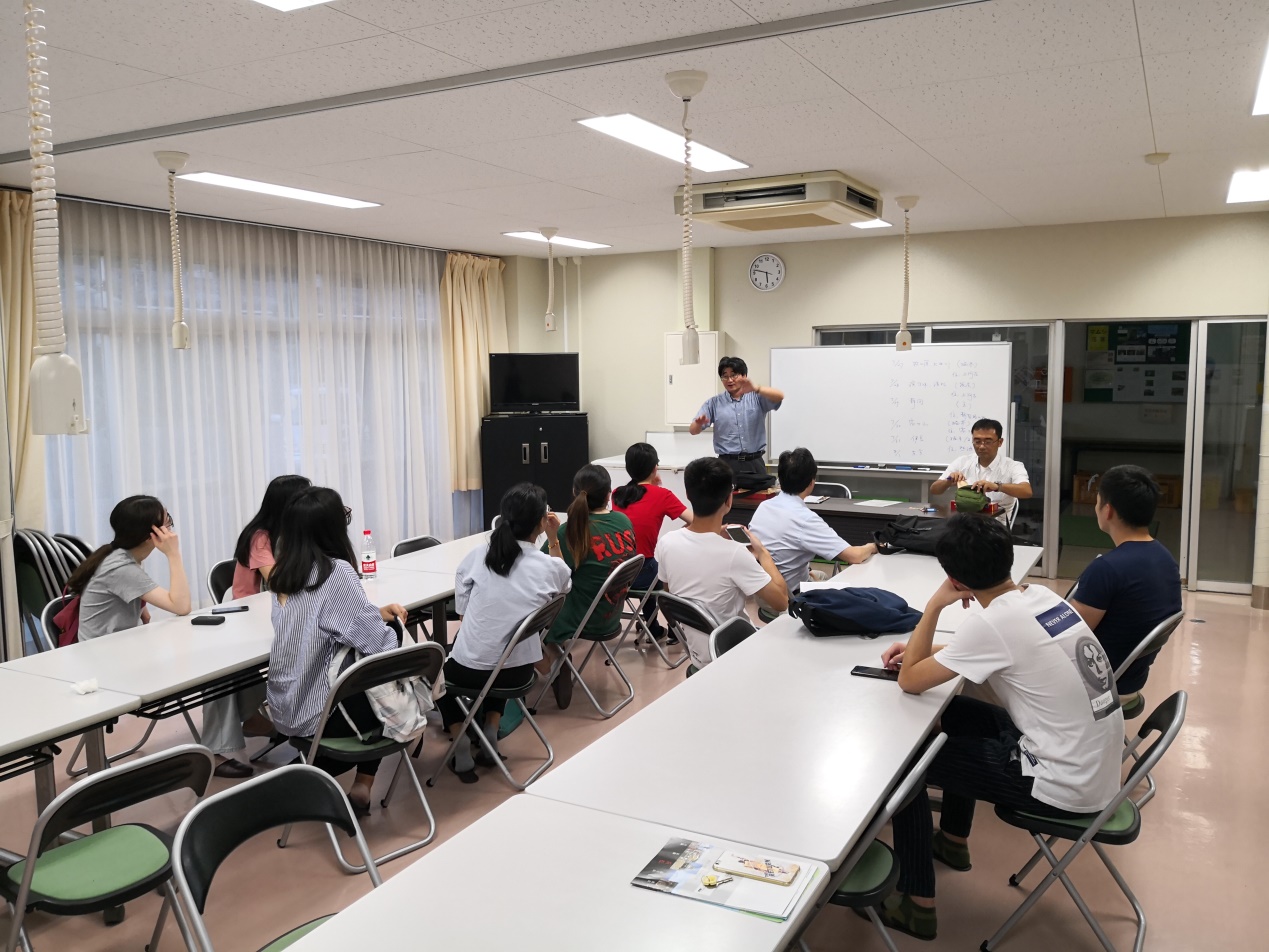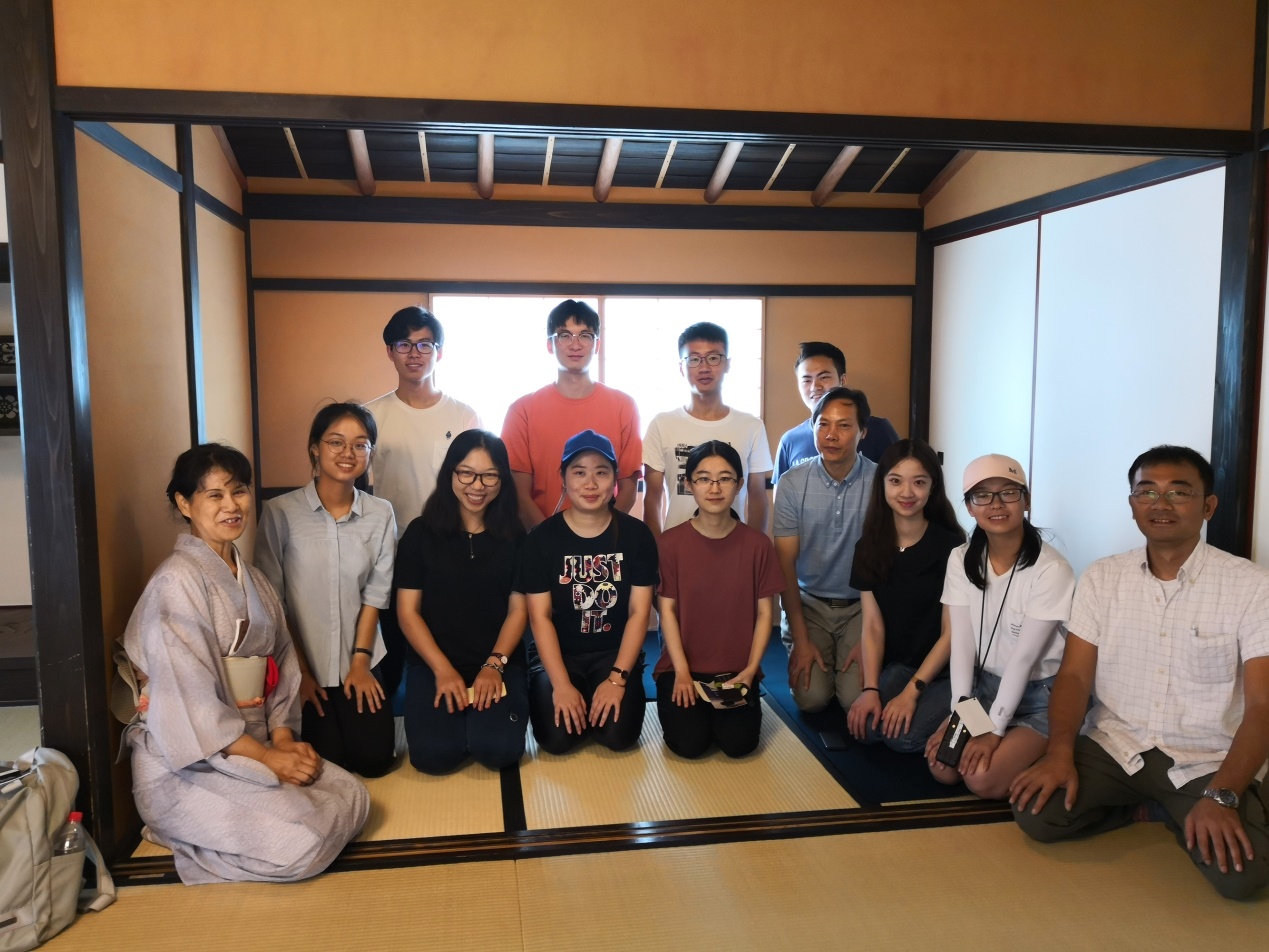Editor: 邵丹蕾 Author: Xu Jiayingzi Time: 2018-08-07 Number of visits :228
26th July, Prof. Jin Pingbin from Department of Geography led a team of nine students attended the summer school in Shizuoka University.
The summer school was strongly supported by Zhejiang University and Shizuoka University, and the program consisted of field study and cultural exchanges, which promoted the students' understanding of cultural diversity and helped gain academic guidance through cultural activities and academic seminar respectively. This has deepened their knowledge in their research area and given them some ideas about personal development. The students have reflected on their experience:
·Academic exchange
Professor Wang Quan and six postgraduate students from Shizuoka University presented their researches, which granted us a great chance to rethink about our study and professional development. Professor Wang encouraged us to communicate with students in Japan, make full use of education resources of Shizuoka University, have a taste of the Japanese campus culture, and reflect on the differences between Shizuoka University and Zhejiang University.

We lived in the Shizuoka University for three days, where we finished a geographical internship.
During the tour in Fuji Mountain, we did not only appreciate the splendid scenes, but also recorded different geographical features, learnt the geographical causes, geographical processes, and ecological and cultural backgrounds. Along the way downhill, we all amazed at the great ecological protection and became aware of the significance of the protection of the environment.
In Hamamatsu’s Cave, we observed the karst landforms and stalactites of the limestone. Meanwhile, we also consolidated our expertise.
·Cultural exchange
During the trip, we did not just sit in the classroom, but also learnt Japanese culture on-site.
Together with Assistant Professor Masaaki Naramoto from Shizuoka University and Professor Jin from our university, we visited the CHA museum. Through the tea ceremony, we got to know the Japanese CHA culture and studied the production process of hand-made green tea, through which we felt a link between Chinese tea culture and Japanese tea culture.

In the daily communication with Japanese students and teachers, we learned some simple dialogues in Japanese language. We found out from the language the reason why Japanese people are always polite and respecting the others.
When standing in front of Mt. Fuji Miyako Shrine, we admired the long history of its architecture. We also moved by the legend lying behind it. It’s both a symbol of Mt. Fuji and of the Japanese faith.
In Izu, we learned the history of the word heritage Lushan Reverberatory Furnace which shows the beginning of Japanese industry.
·Summary
After eight-day’s learning, communication and practice, we have gained a lot. The summer school not only deepened our understanding of professional knowledge, but also gave us some deep thought about our future development. Outside the classroom, Professor Wang arranged a variety of cultural experience activities so that we could have the opportunity to appreciate the local customs and special charm of Japan.
Editor's note
School of Earth Sciences will continue to strengthen the connection with international organizations, renowned universities overseas and scientific research institutions, and provide more academic and cultural exchange opportunities for the teachers and students.
